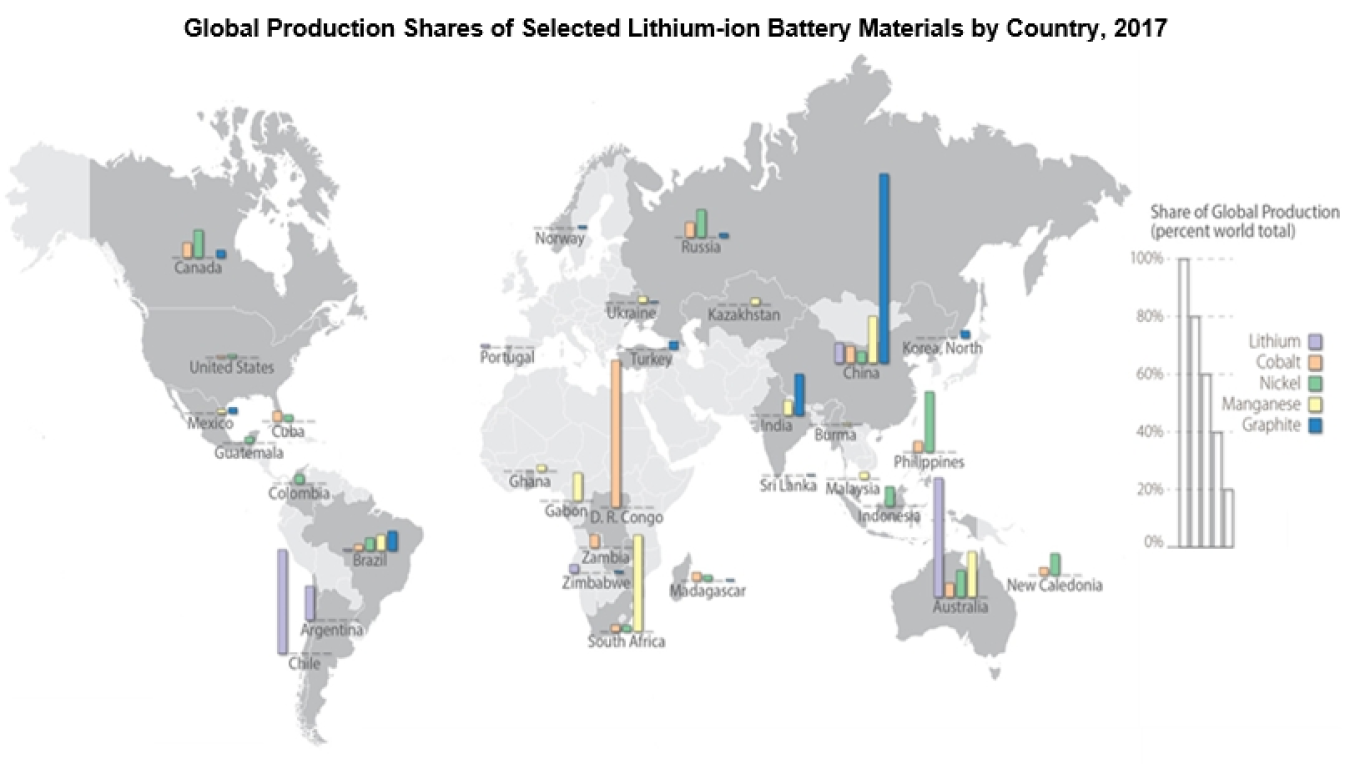Key materials used for lithium-ion batteries, lithium, cobalt, nickel, manganese, and natural graphite, come from more than 30 different countries.
September 16, 2019Some key materials used for manufacturing lithium-ion batteries are lithium, cobalt, nickel, manganese, and natural graphite, which come from more than 30 different countries. In 2017, Australia, Chile, and Argentina produced 91% of all lithium while the rest of the world supplied the remaining 9%. The Democratic Republic of Congo produced 59% of the world’s cobalt. Other lithium-ion battery materials, such as nickel, have a more even distribution of production throughout the world. Learn more about U.S. efforts in lithium here.

| Material | Total Tons Produced | Country | Share of Production |
|---|---|---|---|
| Lithium | 43,000 | Australia | 44% |
| Chile | 34% | ||
| Argentina | 13% | ||
| Rest of World | 9% | ||
| Cobalt | 110,000 | Democratic Republic of Congo | 59% |
| Russia | 5% | ||
| Australia | 5% | ||
| Rest of World | 31% | ||
| Nickel | 2.1 million | Philippines | 11% |
| Canada | 10% | ||
| Russia | 9% | ||
| Australia | 9% | ||
| Rest of the World | 61% | ||
| Manganese | 16 million | South Africa | 33% |
| China | 16% | ||
| Australia | 14% | ||
| Rest of the World | 37% | ||
| Natural graphite | 1.2 million | China | 67% |
| India | 13% | ||
| Brazil | 8% | ||
| Rest of the World | 12% |
Source: Clean Energy Manufacturing Analysis Center, “Are there enough materials to cover li-ion batteries?” August 15, 2018.

